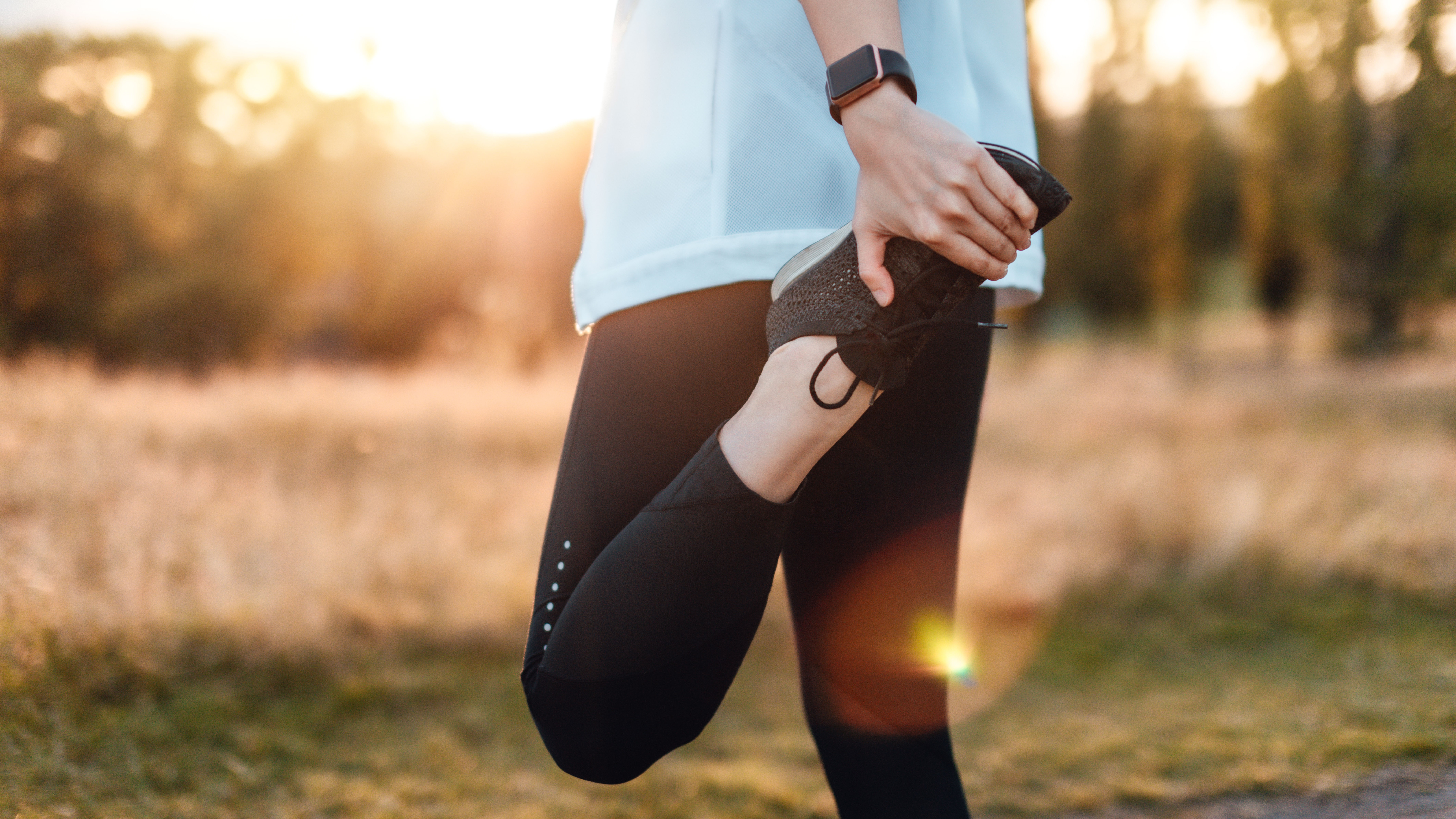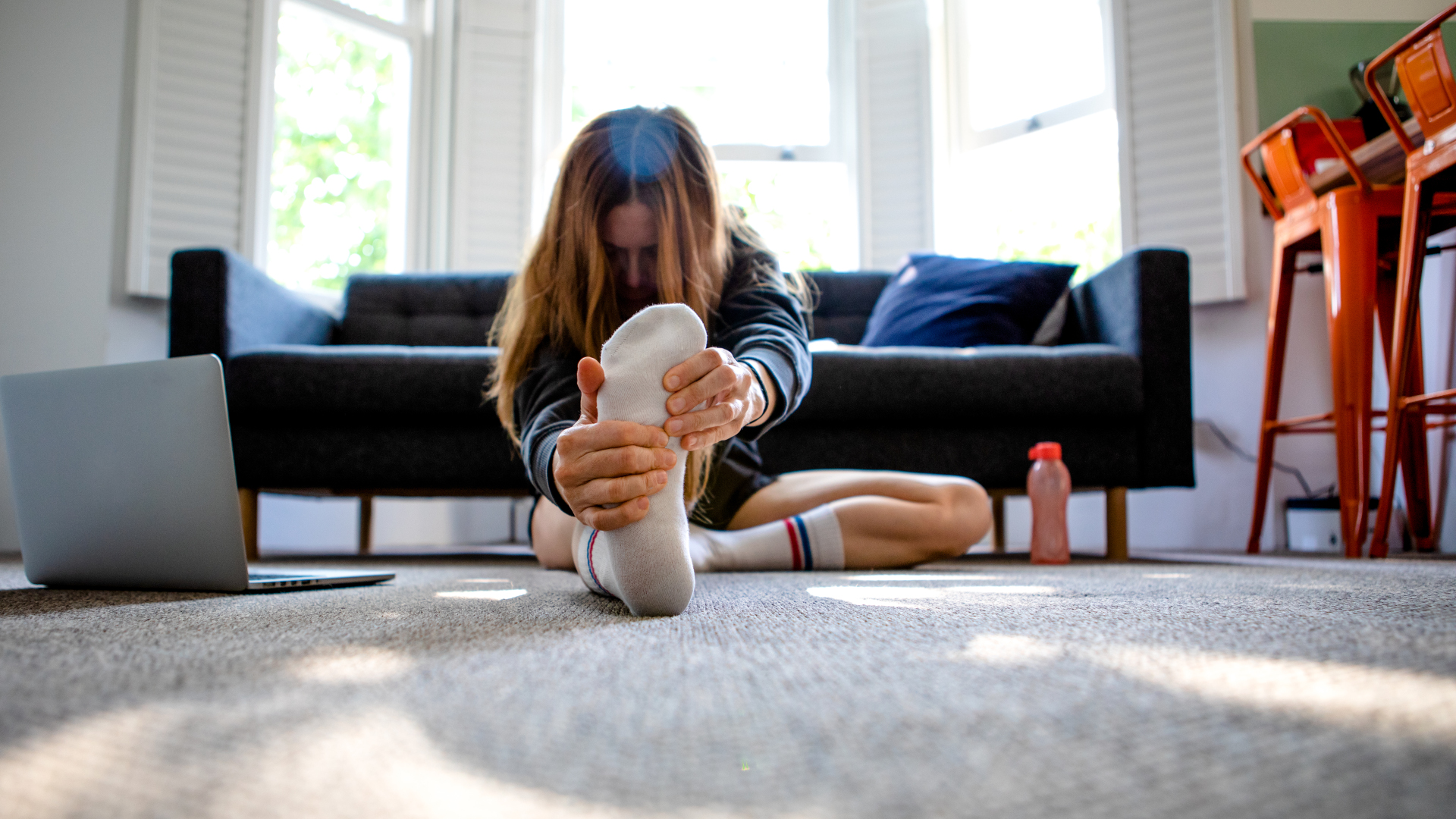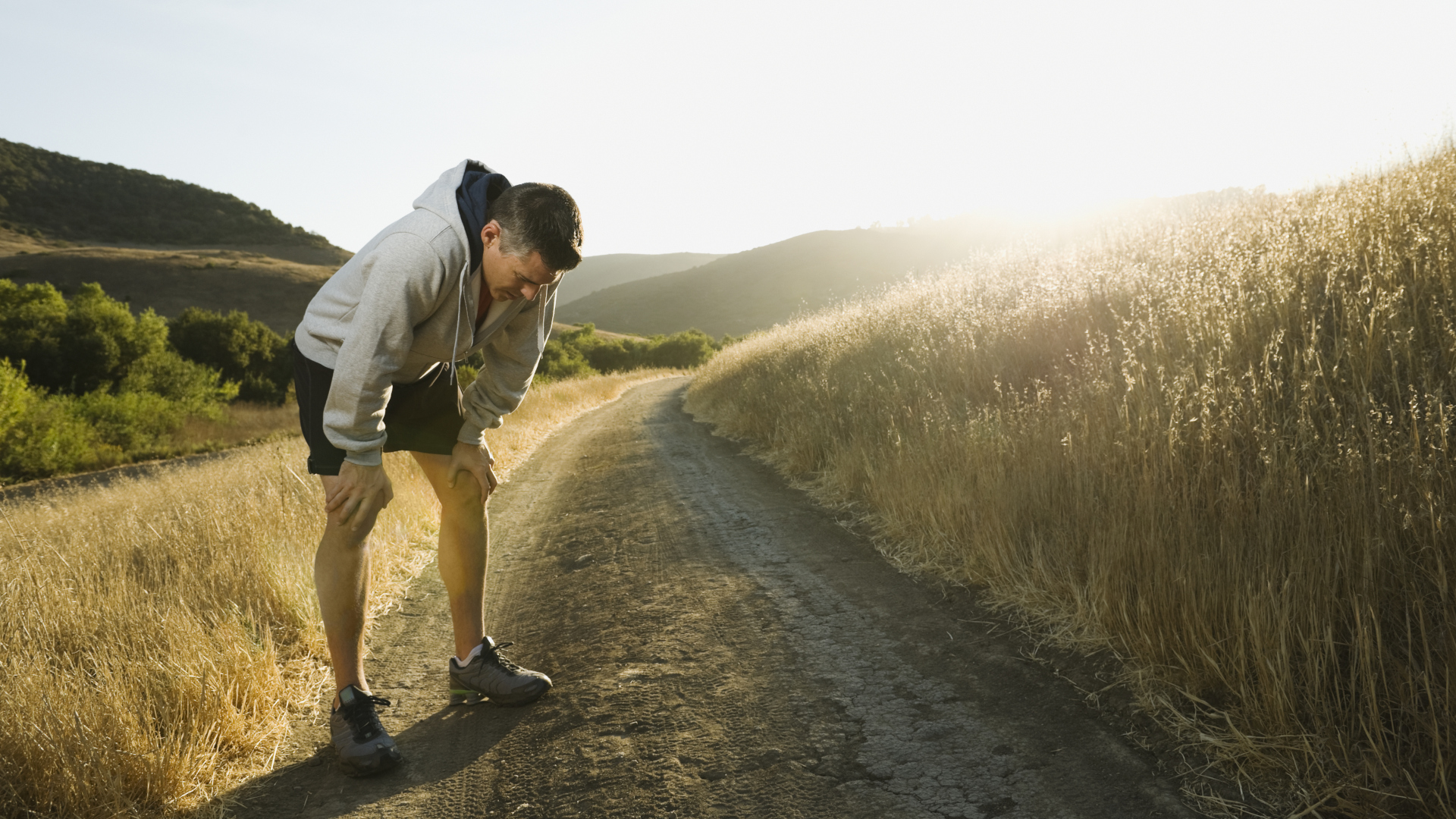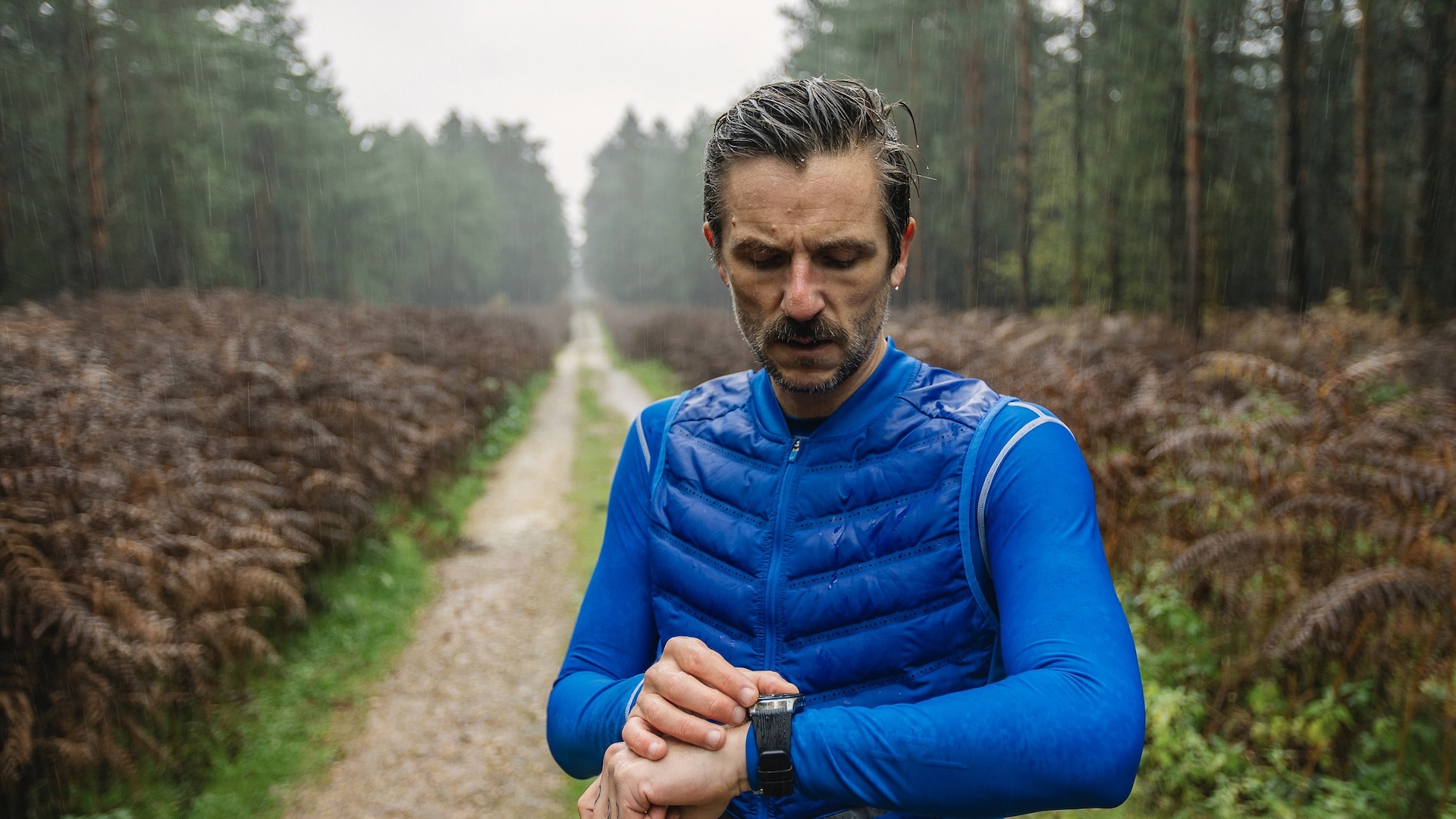Do you really need to cool down after exercise? And should you be worried if you don't?
Most of us have been taught that a cool down after exercise reduces soreness and injury risk – but what does the science say?

When you’ve just finished a run, the old adage goes that before you kick off your trail running shoes and hit the shower, you should perform a cool down routine with walking and stretching. The same goes for a strength session at the gym or even a game of squash.
The all-important cool down is a vital part of your workout routine, allowing your heart rate to return to normal levels slowly and to prevent your muscles from freezing up. Or so we’re told. But do we really need to cool down after exercise? And what happens if we don’t?
I recently found myself discussing this topic with a friend while we were out on a trail run. She habitually walks the last 5 - 10 minutes of any route, then performs a few cool down stretches after her run. I usually slow to a walk when I can see my car or house and plop right down at my laptop to start work when I get home, rather than worry about my calf muscles.
Now in fairness, I’m a yoga teacher with a regular practice, so the chances are high that I’ll be on my mat stretching at some point later in the day, so it’s not that I skip that aspect of my routine entirely – I just don’t usually do it immediately following a run.
In chatting, we both realized that we’ve been well-indoctrinated with the idea that every workout should involve a warm up and cool down (only she’s better at following guidelines than me apparently) but neither of us knows the science behind it, despite the fact that we’re both well-trained in anatomy and movement. So I decided to investigate what happens if you skip the cool down, and whether there are any science-backed benefits.

The cool down claim
A cool down – usually walking and stretching, or light spinning if you’re on a bike followed by some stretching – is considered a fundamental part of any workout routine. The American Heart Association says this is important because if you allow your heart rate and blood pressure to drop suddenly, you may become lightheaded. Not something I've ever experienced, but it sounds like something to be avoided. It's certainly something that's recommended as a way to cool down after exercise during a heatwave.
Penn Medicine elaborates on this idea, explaining that if you stop running abruptly and stand still, say to check your phone, your muscles stop pumping blood. It pools in your extremities, a condition known as Exercise Associated Collapse, and you could pass out. Consequently, they recommend a prolonged three-phase cool down that involves slowing down, dynamic exercises then stretching. This certainly makes an abrupt stop sound like it’s a bad idea, but I started to wonder – what happens when I stop at the traffic lights on a run? Runners do this every day; are we really in danger?
All the latest inspiration, tips and guides to help you plan your next Advnture!
It turns out that EAC is a condition that can and does affect ultra runners during endurance races like ultra marathons and marathons. This phenomenon isn’t entirely understood, though the blood pooling effect is one theory to explain it, and a five-year retrospective study on Gothenburg's Marathon concluded that it affects 1.53 runners per 1000 runners.
So basically, EAC is real, but the reason you don’t see runners collapsing at every red light is because it’s recognized as a specific type of medical event that affects a specific type of athlete during competition and not something you probably need to worry about if you’re just out on a mellow 10k trail run like me.

Do you really need to cool down after exercise?
So if you’re not in imminent danger of fainting when you don’t cool down, do you need to do it? Does it have any benefit? A 2018 scientific review on this topic found that many people regularly perform between five and 15 minutes of low-to-moderate intensity exercise within an hour of their workout, otherwise known as an active cool down, in an attempt to facilitate recovery. The studies reviewed show that active cool downs are largely ineffective: they do not appear to prevent injuries, improve long-term adaptation to load, or significantly reduce muscle soreness or stiffness the next day.
A cool down may accelerate the recovery of lactic acid in your blood, but not necessarily in muscle tissue, which is where you might want it. It also may partially prevent immune system depression and promote faster recovery of the cardiovascular and respiratory systems, but it remains unknown whether this reduces the likelihood of post-exercise illnesses. The authors conclude that a cool down is most likely unsuccessful at improving performance during the following days, though some beneficial effects have been observed.
Further, a 2007 randomized controlled trial of 52 healthy adults examined the effects of both a pre-workout warmup and a post-workout cool down concluded that a warmup performed immediately prior to unaccustomed eccentric exercise does produce small reductions in Delayed Onset Muscle Soreness, but a cool down does not.

Based on the available science, warming up seems to be a smart idea, but the science on cool down exercises is lacking. That said, there may be one really good reason to incorporate a cool down into your workout routine, according to Matt Hensley, a Colorado-based running coach and founder of Boulder Underground, and that's to increase the amount of time they spend on the trail.
"While it may be up for debate if cool-downs reduce muscle soreness or help with recovery, I do think they allow athletes to add volume to their aerobic activity in a week," says Hensley, who typically prescribes 10 - 20 minutes for warm up and cool down.
"If an athlete is doing two workouts in a week, they're adding 40 - 80 minutes in additional aerobic volume in a week with minimal additional fatigue."
Ultimately, there’s nothing to say that skipping an active cool down can be dangerous or increase your risk of injury. But as my friend and I slowed to a five minute walk, did a few of my favorite yoga stretches for runners, then grabbed a cool drink and enjoyed the view, I had to admit it was an enjoyable part of the whole trail run.
The moral of the story? Don’t be gripped by fear if you miss the cool down, but if it’s a ritual of your session that you enjoy, it’s probably good for you, and it can be a great way to increase your distance.
Julia Clarke is a staff writer for Advnture.com and the author of the book Restorative Yoga for Beginners. She loves to explore mountains on foot, bike, skis and belay and then recover on the the yoga mat. Julia graduated with a degree in journalism in 2004 and spent eight years working as a radio presenter in Kansas City, Vermont, Boston and New York City before discovering the joys of the Rocky Mountains. She then detoured west to Colorado and enjoyed 11 years teaching yoga in Vail before returning to her hometown of Glasgow, Scotland in 2020 to focus on family and writing.

